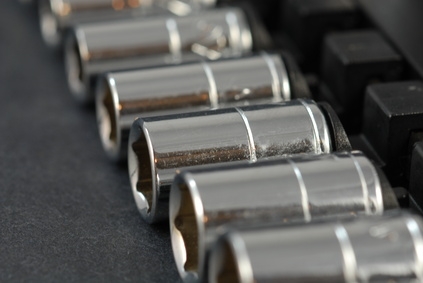
If you notice poor handling, uneven tire wear, or loose steering, you may need to replace the control-arm bushings in your vehicle. Most vehicle axles are attached with four control arms. There are two arms on the lower portion of the axle and two on the upper. There are bushings at the end of each control arm. The bushings deteriorate over time and need to be replaced.
Locate the control arms on the vehicle. These arms are connected to the axle and frame with bolts. There are two upper control arms and two lower.
Remove the bolts securing one of the control arms with a ratchet. Only remove one control arm at a time to keep the axle in position.
Remove the control arm from the vehicle by lifting it out of the brackets on the axle and the frame.
Drill a 1 1/2-inch hole in the center of the bushing using a power drill and hole saw. Drill completely through the bushing.
Remove the remaining parts of the bushing using pliers.
Clean the control-arm hole using a wire brush. If the control arm is rusted or scratched, paint it using aerosol paint. Allow the paint to dry for two to three hours.
Place a small amount of lubricating oil on the outside section of the new bushing.
Align the bushing and the control arm side by side in a vise.
Rotate the handle on the vise slowly to insert the new bushing into the control arm. Continue closing the vise until the bushing is fully set into the control arm.
Repeat these steps on the opposite side of the control-arm bushing if it needs replacing. Re-install the control arm back into position by sliding the control arm into the brackets. Insert the bolts into the bracket and tighten them using a ratchet and socket.
Repeat these steps for the remaining control arms.